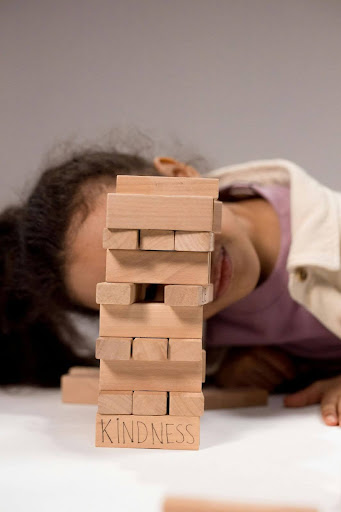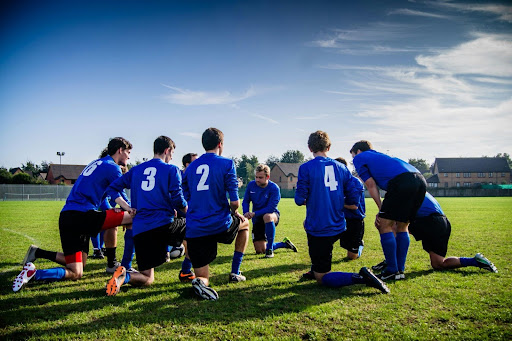Imagine the Future
Your community foundation helps bring your charitable goals to life.
Hello from the community foundation!
The days are getting shorter, and the end of the year is approaching quickly. The team at the community foundation is here to help you carry out your charitable giving plans to make a big difference in 2025. In that spirit, we are sharing insights on three topics that are relevant to many community foundation donors and fund holders right now, as well as to individuals and families who are considering establishing a fund at the community foundation this year.
—The community foundation is here to help you make a difference right now, just as the community foundation has been in the past and will be for generations to come. As our region’s home for charitable giving, the community foundation and its donors respond to community priorities and urgent needs, whether triggered by a government shutdown that disrupts paychecks, services, and community programs, a natural disaster, or economic factors. Learn how 2025 is an especially important year to respond to these needs.
—What’s the difference between tax-deductible and tax-exempt? What does “501(c)(3)” mean exactly? The community foundation is happy to answer these and other questions about the overall framework for charitable giving rules and help you create a punch list of items to discuss with your tax advisors. Especially for year-end giving, it’s crucial to pay attention to deductibility rules.
—Donor-advised funds provide tremendous flexibility for families and individuals and are an important source of funds when times get tough for people in need. If you’ve not yet considered how your donor-advised fund helps you do even more for the community you love, now is the time to discover its multi-faceted uses and benefits.
Finally, November 12 through 18 marks National Community Foundation Week, a special time to celebrate the impact that people like you—our donors, fund holders, and community partners—make possible. Community foundations across the country, including ours, exist to strengthen local philanthropy and connect generous individuals, families, and businesses with the causes that matter most to them. More than 800 community foundations nationwide serve as trusted stewards of charitable resources, offering donor-advised funds, legacy planning expertise, and deep knowledge of local needs and opportunities. During Community Foundation Week, we’re proud to celebrate our shared commitment to making a difference—together. We invite you to connect with our team to explore how your charitable giving can be both meaningful and effective, creating lasting impact right here in our community.
Thank you, as always, for the opportunity to work together. If you’ve already established a fund at the community foundation, thank you! If you are considering doing so, please reach out! We would love to help you get that set up in plenty of time to take advantage of year-end giving benefits and do a lot of good for the causes you care about.
With gratitude,
Angie Tatro,
CKCF CEO
Year-end dynamics: Tax law changes and increasing community needs
You are likely aware that many families in our community are struggling, and you may be wondering how you can help most effectively. Whether increased community needs are triggered by a government shutdown that disrupts paychecks, services, and community programs, a natural disaster, or economic factors, the community foundation is committed to helping you structure charitable giving plans that make a real difference in the lives of people in our region.
Here are a few examples of how our team can help:
Real-time identification of needs. The team at the community foundation has its finger on the pulse of which organizations are helping families in crisis. As federal employees and contractors grapple with missing income, and federal benefits become uncertain for families in need, charities in our community can be stretched thin attempting to meet the rising demand for food, rent, and utility assistance. The community foundation knows where dollars are most needed and how those dollars translate into immediate impact.
Offering fast and flexible charitable solutions. If you have already established a donor-advised fund at the community foundation, or if you are considering doing so, you can use it to provide support to charities on the front lines of emergency assistance in our community. The community foundation makes it fast and easy for grants to flow out of donor-advised funds to qualified and vetted organizations that are doing the work on the ground.
Leverage important timing. The urgency of community needs in late 2025 coincides with an important window of opportunity for people who itemize their income tax deductions. Under the One Big Beautiful Bill Act (OBBBA), limits on charitable deductions will tighten beginning in 2026. That means it may be advantageous to certain donors to “front-load” or “bunch” contributions—such as by giving more this year through establishing or adding to a donor-advised fund—to maximize both tax benefits and impact.
Plan for the future. Unfortunately, community crises are not unusual. The community foundation works with you and other donors and fund holders to strengthen our community’s ability to respond to urgent needs, regardless of when and why they occur. For this reason, many donors not only give to their favorite charities through donor-advised funds, but they also use their donor-advised funds to give to the community foundation’s dedicated response funds to ensure that dollars are in place to support people in need the moment the next crisis hits.
At the community foundation, we encourage you to reach out anytime. At this moment, though, when urgent needs and tax opportunities are occurring simultaneously, we encourage you to reach out as soon as possible. It is our honor to work with you and your fellow donors who care so deeply about our community.
 Tax-deductible, tax-exempt, and need-to-know nuances
Tax-deductible, tax-exempt, and need-to-know nuances
As year-end approaches, your thoughts might naturally turn to charitable giving—both as a way to support favorite causes and to make the most of available tax benefits. Recent changes in the tax laws have caused many people to reflect on their own understanding of the rules for deductibility, starting with a very fundamental question about what the IRS considers deductible—and what falls outside that category.
Here’s a quick three-point refresher:
–In general, contributions are eligible for the most favorable tax deduction when they are made to organizations that have received tax-exempt status under Section 501(c)(3) of the Internal Revenue Code. So-called “public charities” with 501(c)(3) status must operate exclusively for charitable, educational, religious, scientific, or similar purposes. Gifts to these organizations are eligible for a deduction if you itemize deductions on your income tax return.
–Beyond 501(c)(3) public charities, there are other types of organizations that do important community work but are not eligible to receive tax-deductible contributions. Civic groups, social welfare organizations, and neighborhood associations—while vital to the community—are usually classified under different IRS categories, such as Section 501(c)(4) or 501(c)(6). Gifts to these organizations are typically not deductible, even though the organizations serve valuable purposes.
–It’s also important to keep in mind that “nonprofit” and “tax-exempt” do not always mean the same thing. Nonprofit status is a matter of state law, while federal tax-exempt status requires specific IRS approval. “Tax-exempt” means that the organization itself does not pay taxes. Only a subset of tax-exempt nonprofits qualify as “charitable,” enabling them to receive deductible contributions.
Sounds complicated, right? It is! The good news is that your community foundation is here to help. Our team works with community organizations every day and can help you confirm which gifts are eligible for a deduction and which are not. More importantly, we can help you make sure that your support—whether or not it qualifies for a deduction—makes the greatest possible impact in the areas you care about most.
At the end of the day, while the tax deduction can be an added bonus, what matters most is the good your generosity accomplishes. As you plan your year-end giving, please reach out to our team. We’re here to help you give confidently, wisely, and in a way that makes a lasting difference in the community you love.
 Donor-advised funds: Bunching, abundance, and flexibility
Donor-advised funds: Bunching, abundance, and flexibility
Many people establish a donor-advised fund at the community foundation to simplify their giving, stay organized, and even engage the next generation in philanthropy. And, for some families, 2025 is the year when the donor-advised fund takes on an even bigger role in aligning charitable giving goals with changing tax laws. Even families who are not impacted by changing tax laws are beginning to view their donor-advised fund with more admiration for the variety and abundance of purposes it can serve. Let’s take a look:
–Evaluate “bunching” in 2025. If you itemize deductions on your income tax return, you might have heard that things are changing in 2026 when both a floor and a cap on itemized charitable deductions kick in. This means 2025 offers a unique opportunity to “front-load” or “bunch” charitable contributions into your donor-advised fund before the tax landscape shifts. By making a larger contribution in 2025—perhaps representing two or three years of anticipated giving—you can maximize your tax deduction under the current rules while continuing to recommend grants to charities in 2026 and beyond.
–Organize your giving. Your donor-advised fund at the community foundation already serves as a useful hub to organize your giving. You make tax-deductible contributions of cash or appreciated stock, and then recommend grants to your favorite organizations over time. With this in mind, make sure your fund is the center of your charitable activity—not a side account. In other words, consider making all of your charitable contributions through your donor-advised fund to streamline recordkeeping and tracking of your annual giving footprint.
–Adopt a portfolio approach. Alongside your donor-advised fund, you can establish a designated or field-of-interest fund at the community foundation to expand your charitable giving portfolio. A designated fund supports a specific charity for the long term, while a field-of-interest fund focuses on an area of community need, guided by the community foundation’s deep local knowledge. If you are over age 70½, your IRA’s Qualified Charitable Distributions can go directly to field-of-interest and designated funds—reducing taxable income while supporting the causes you care about.
–Establish a legacy. Of course, you can include your charitable funds in your estate plan. Many people name donor-advised funds or other community foundation funds as beneficiaries in their wills, trusts, or retirement accounts. Retirement plans such as traditional IRAs, for example, can be tax-efficient assets to give to your fund through your estate because the gift bypasses income and estate tax.
As you begin to view your donor-advised fund in a new light, remember that the community foundation team is here to help you make the most of it, whether that means exploring how to “bunch your giving” in 2025, creating complementary funds, or planning your charitable legacy. We are honored to work together to ensure that your philanthropy continues to make a lasting difference in our community, today and for years to come.
The team at the community foundation is honored to serve as a resource and sounding board as you build your charitable plans and pursue your philanthropic objectives for making a difference in the community. This newsletter is provided for informational purposes only. It is not intended as legal, accounting, or financial planning advice. Please consult your tax or legal advisor to learn how this information might apply to your own situation.








































